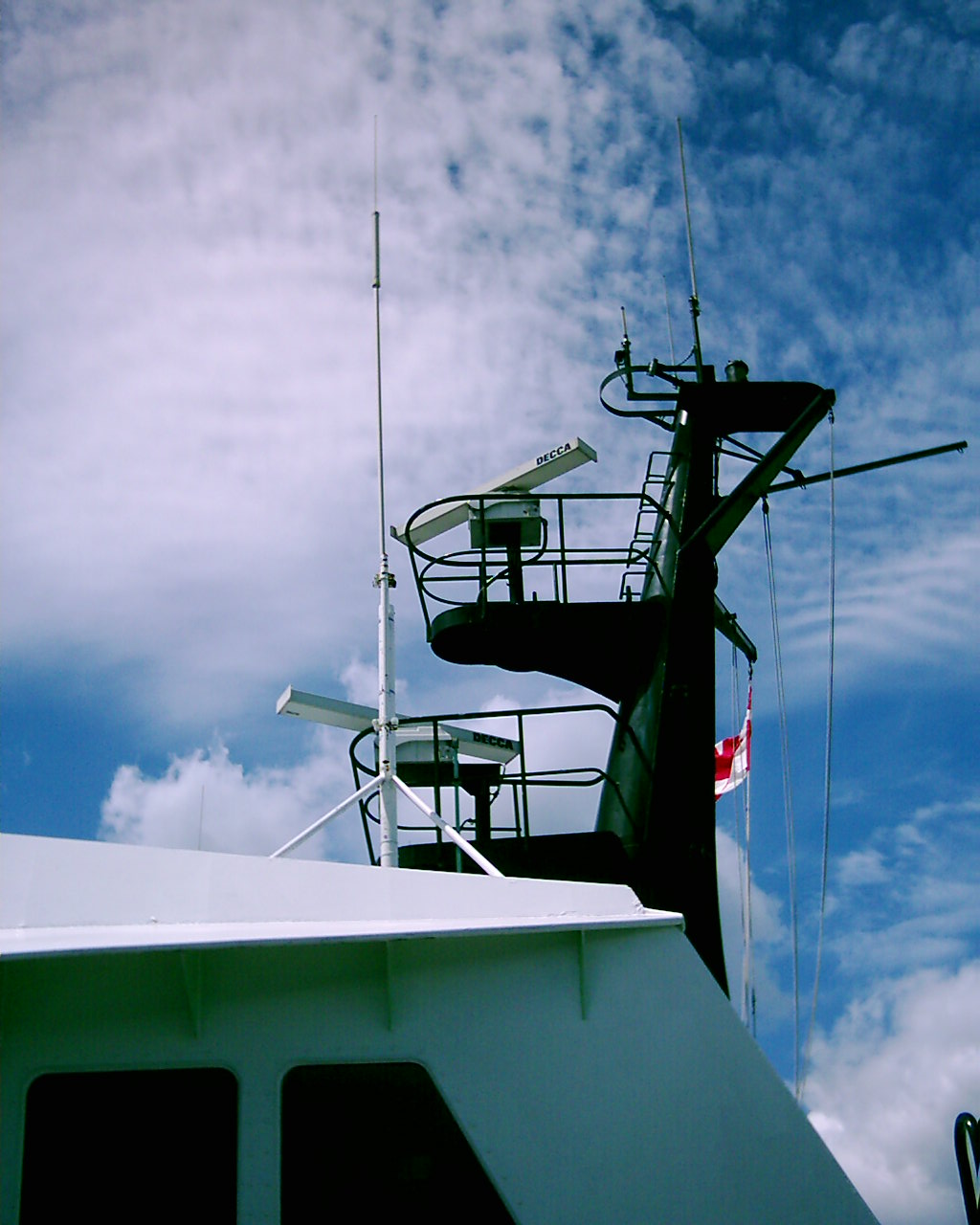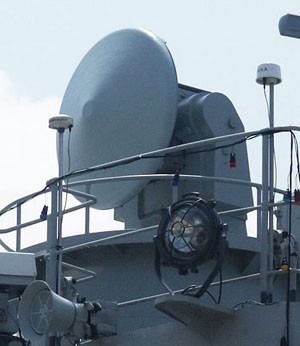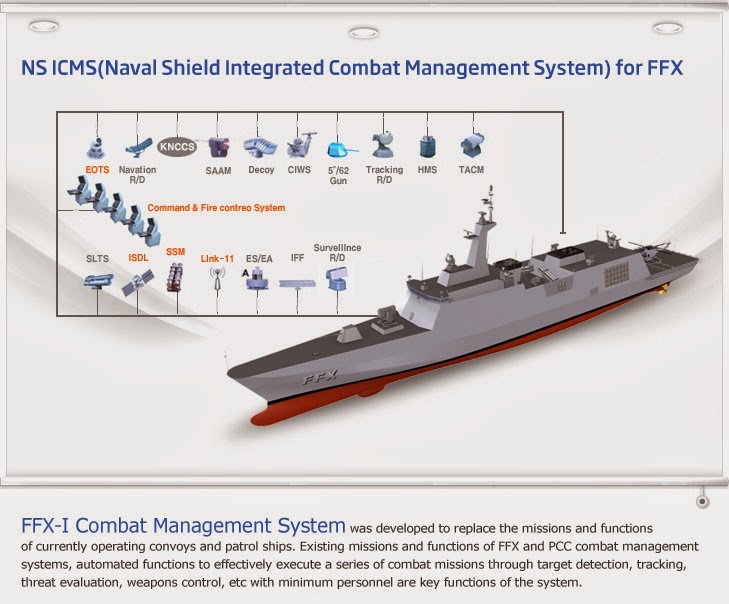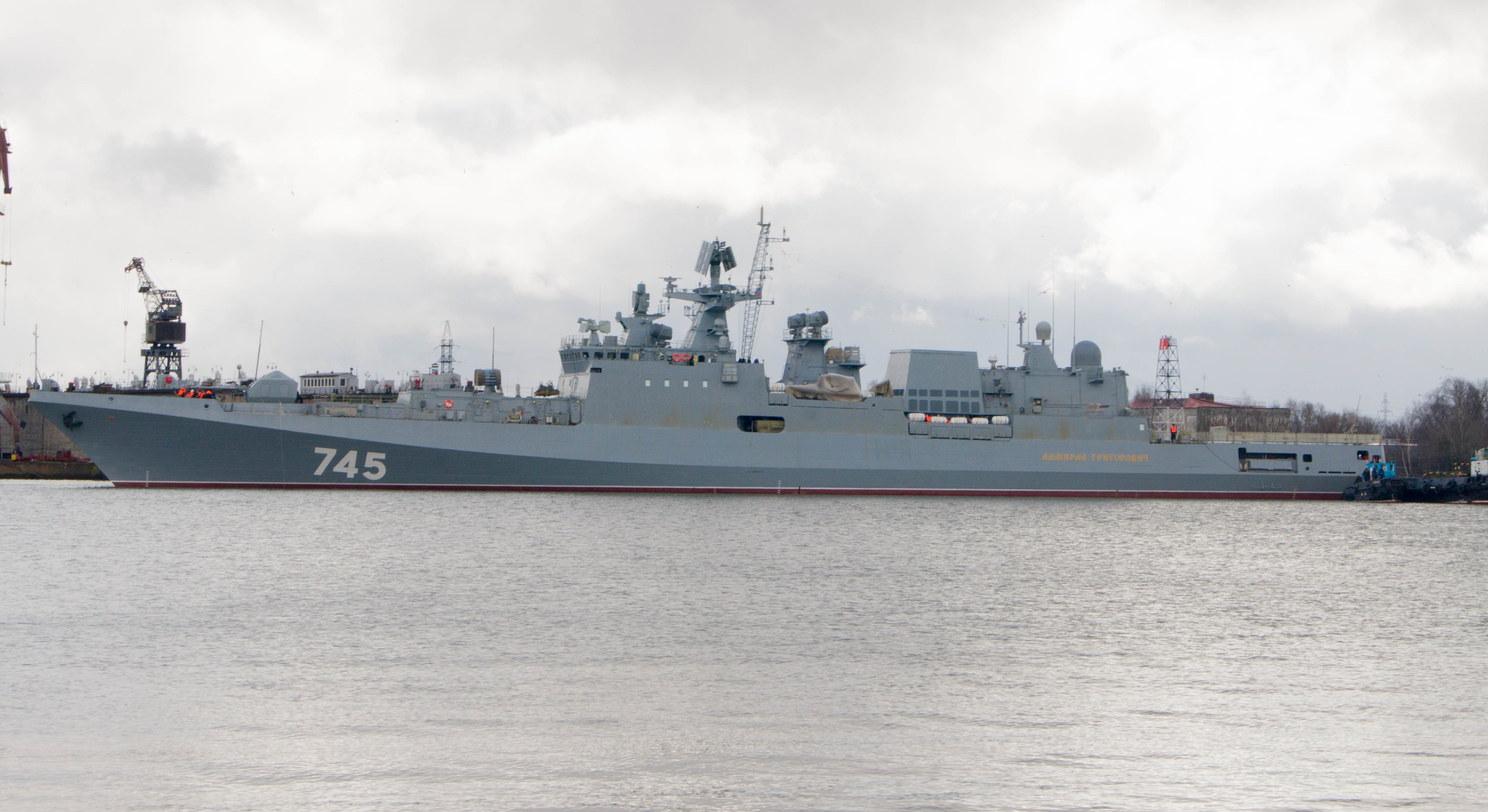Going to focus on the sensor fit and how Chinese sensors/radars fitted on the C-28A are 'watered down' from the 054 class. If we have to go for this purchase - it warrants closer scrutiny. So let's do a deep technical dive - shall we?
The Chinese defense industry sees the C-28A as a smaller scaled-down version of the 054 class and is (depending on glass half full/empty theory) termed as either a 'Heavy Corvette' or a 'Light Frigate'. Conversely the 054 class (and variants) are known of course as full frigates. Bangabandhu class in BN inventory is also considered a light frigate because it displaces only 2300 tons - in spite of being thoroughly modern and capable as it is. C28A is going to be heavier than the Bangabandhu by about 500 tonnes.
Here's a visual rundown of the sensors on the C-28A with the description and specs following. I am especially curious about the Chinese EW suite and will try to gather more info (origin, dependence on Baidou system etc.).
I am also curious how the C-28 compares to the 054 class sensor-wise - but let's look at the C-28A first....
Although not sensor related - the ASW Helis on the C-28A are going to be the older Super Lynx ones (Algeria already operates half a dozen of these). I'd like to know if the smaller (and newer) AW-159 with Dipping Sonar and Sea-Skua capability can be sufficient as a replacement. Bangladesh already is a good customer of Agusta Westland with AW-109 and AW-139 helis in the BN SAR fleet.
- The ship is equipped with a Smart-S Mk2 medium to long-range air and surface surveillance 3D multibeam PESA radar designed by Thales Nederland, with a maximum range of 250 KM.
- The C-28A's EW combat system is largely Chinese with the exception of the Thales Smart-S Mk2, associated multifunction operator consoles (MOC)/Tacticos cluster, Link Y datalinks, and associated consoles. Four or so MOC for the Smart-S are integrated with a CSTC-supplied combat management system (CMS).
- One Type 345 fire-control radar system used to guide the FM90N missiles.
- Two Type 347G (Rice Bowl) fire-control radar used to guide the Type 730 CIWS.
- C28's are also equipped with a hull-mounted Chinese origin sonar. (spec?)
- Electronic warfare & decoys: ESM: 2 × Type 726-4 Decoy launcher system. (lanzacohetes)
- Digital and solid state Type 726-4 decoy launcher system is mounted on both sides of the ship and consists of two launchers.
- The primary role of the Type 726-4 is to launch chaff and decoys.
- However, atypically, it may also fire ASW rockets (against submarines, torpedoes, and frogmen), and even be used for shore bombardment.(how?)
- Each launcher has 18 tubes arranged in three six-tube rows.
- Firing is typically controlled automatically by the combat data system, but a manual control console is also provided.
Regarding the 054A class' sensors - the following warrants a careful review from AFCEA. Although dated - I believe the analysis still largely stands.
China Deploys New Littoral Ships | SIGNAL Magazine
=============================================================
Frigates with advanced systems complement guided missile destroyers.
The People’s Republic of China has launched a new series of frigates that provide an effective modern capability for littoral operations. Known as the Type 054 series, these new frigates can be categorized into two classes—the 054
Jingkai and the newer, much more capable 054A. The first appeared about four years ago, but China could be gearing up to produce both variants in large numbers.
China’s impressive new generation 052
Luyang-class guided missile destroyers (DDGs) have made the launching of a new stealthy People’s Liberation Army Navy (PLAN) 054 frigate class go nearly unnoticed. But China has a long history of deploying littoral ships, and it now may be incorporating capabilities hitherto found only in blue-water deployments.
The PLAN has launched 41 frigates in five series classes since 1975, and most still are available for littoral operations. Several obsolete frigates have been scrapped or are in a reserve status, and many of China’s 30 remaining 053/053H
Jianghu frigates are not considered modern. Unlike distant blue-water missions, many coastal and shallow-water operations are near local air and surface support and do not require high technology ships. China has only 14 modern 053H3 and 053H2
Jiangweifrigates split between its Eastern and Southern fleets. Basing only four old frigates in the Northern Fleet seems an operational limitation that one
Luhu DDG and old
Luda destroyers cannot fulfill.
Because of a slow startup production rate for the 054 ships, the PLAN is upgrading the
Jiangwei variants to be effective in modern combat scenarios. One upgrade—adding the HN-900 indigent and Russian Light Bulb datalinks—could provide vital connectivity with new DDGs and also Russian Pacific warships.
Jiangwei hulls 539 and 540 are removing and replacing their original main guns, search radars, YJ-8 surface-to-surface missiles (SSMs) and two 37-millimeter guns, according to
Kanwa Defence Review.
The new generation PLAN post-
Luda modern DDG designs all have had only one or two hull production runs. It is possible that the 054 frigate design may be the first new PLAN surface warship to be produced in large numbers since the old 053/053H 21-ship
Jianghu frigate design from 1970 to 1986. Another clue to this idea is the fact that the production is being split between two shipyards as was done for the
Jianghu instead of all being produced at one shipyard. The 054 and especially the 054A are significant new vessels reflecting the PLAN modernization previously seen only in a few DDGs. These demonstrate a more versatile littoral and blue-water combat vessel that could be produced in quantity.
China launched the first new 3,500-ton, 132-meter 054 Jingkai-class frigate, hull 525, named Ma’Anshan, in Shanghai. The second, hull 526, the Wenzhou, was launched in late 2003 in Guangzhou shipyard. In addition to a sleek stealthy design, the most noticeable feature on these two ships is their large radome on the mast aft of the diesel propulsion intake vent structure.
There are conflicting descriptions of the large radome details.
Kanwa Defence Review calls it the SR-64, which is a modern sophisticated anti-ship missile detect-and-track radar in the H band. The 2006 edition of
Jane’s Naval Weapon Systems calls it Type 364 Seagull C at G band. It previously was on only the newest 052B and 052C
Luyang DDGs.
Its maximum detection range for SSMs is 12,000 meters, and it handles target speeds of up to Mach 3.0. This mandates very high data rate calculations.
The 052C
Luyang has two Russian seven-barrel Type 730 close-in weapon system (CIWS) and two Rice Bowl fire control radars. The 054 frigate has four six-barrel Type 630 CIWS, which is a Chinese copy of the Russian AK-630. The firing rate of the CIWS is 4,500 to 5,000 rounds per minute.
However, there is only one Type 347G Rice Bowl fire control radar located on the deck above the helicopter hangar.
This is a serious 054 CIWS limitation, because the single aft Rice Bowl fire control radar can engage incoming targets on only one side, and there are two mounts on each side. This CIWS radar completes the anti-SSM suite by taking over contact tracking at a range of 3,000 meters. This enables a good track solution when the incoming target reaches the CIWS gatling gun maximum range. Type 054 has a backup optic-electronic OFD-630 tracker in case of electronic jamming of the gun radar, which could provide limited aid to the two Type 630 guns on the side that Rice Bowl cannot engage.
The two 054 ships have the French Crotale HQ-7 surface-to-air missile (SAM) system with eight missiles having a range of 13 kilometers. The Type 345 fire control radar is the I/J-band radar for Crotale.
Two Racal Decca 1290 navigation radars, or the RM-1290 I-band Chinese copies, are located on the foremast yardarms. The electronic countermeasures jammers appear to be the Type 984 I band and Type 985 for the E/F band that are on Luyang DDGs. The passive ESM probably is an SR-210 intercept receiver as on Luyang DDGs and Jiangwei II frigates.
The combat direction system (CDS) is designated ZKSB4/6, according to a French source. It is a copy of the French TAVITAC CDS. France first sold the Thomson CSF TAVITAC to China for initial installation on upgraded Luda II DDG 105 and 109 in 1987 and the Luhu DDG 112 and 114 in 1994. The lead ship FFG 525 has eight YJ-2 SSMs with a speed of Mach 1.5 and a range of 120 kilometers (75 miles), but these are replaced on FFG 526 with newer YJ-83 with a speed of Mach 2.0 and a range extended to 150 kilometers (95 miles).
The enlarged helicopter hangar allows deployment of the antisubmarine warfare (ASW) Ka-28 helicopter, which is a sophisticated ASW platform. Russian ASW avionics sensors include the OKA-2 or newer dipping sonar, APM series MAD, Novella surveillance radar and Baku sonobuoy system for RGB series active or passive sonobuoys. Weapons include three APR-2 Orlan active/passive torpedoes or PLAB-250 Lastochka depth bombs. Although the bow sonar is not named in current references, it could be either a French medium frequency DUBV-23 or a Chinese-built copy.
The only visible ASW weapons are two triple barrel ASW torpedo tube launchers with Yu-variant homing torpedoes along with the ubiquitous cell ASW mortars on the forecastle. There is no hint at possible CY-1 anti-submarine rocket (ASROC) loadout. It is more likely that this would be found in the 527 and later upgraded 054A versions. The 1986 ASIANDEX naval exhibition in China first displayed a missile that looked like the U.S. Navy ASROC missile with Yu-2 (MK 46 copy) payload. It has been rumored that several PLAN warships from
Luda DDGs to
Jiangwei frigates have CY-1 capability, but it has never been verified or observed. Photographs have shown a
Jiangwei forward six-barrel launcher firing a CSAN-2 SAM. The CY-1 probably cannot be loaded because it is longer than the
Jiangwei launcher. At least one reference has cited a passive towed array capability for 054, but this is not visible. The main battery is a 100-millimeter gun that is a copy of the French Creusot-Loire. It provides 80-round-per-minute rapid fire and features dual-purpose automatic reloading. The gun turret has a new stealthy cover as is found on the
Luyang DDGs.
The propulsion is one that has been common for PLAN ships for more than 20 years using SEMT Pielstick 16 PAC STC diesels. One difference with the 054 frigates is that their diesels are license built by Hudong Shipyard. This has resulted in many reported breakdowns at sea with the lead 054 ship. It had to be towed back to port in mid-2005 during shipyard sea trials. It was expected that following the practice of all post-1990 new DDG designs, there would be only a few of these built. This was reinforced by the fact that only eight Kamewa screws were procured from Sweden for four hulls.
The 054A offers many powerful weapon characteristics that reflect PLAN ship evolution. A stealthy-looking model frigate, called F16U, was displayed at a 2000 naval exhibit by Hudong Shipyard. It resembles the upgraded 054A with a vertical launch system (VLS) forward and a large three-dimensional radar. Western experts predicted a VLS addition in the 054 modernization, but the actual 054A included many more unexpected weapon upgrades transforming the offensive capabilities from the 054 frigate baseline.
The third and fourth hull 527 and 528 were launched in 2006 in Hudong and Guangzhou shipyards. Replacing the limited-range Crotale HQ-7 forward SAM is not the rotating HQ-7 drum type VLS that was on 052C. The new rectangular module has 32 square hatches and resembles the U.S. Navy MK 41 VLS. The designation of this new VLS is unknown, as it has previously been observed only on an experimental weapon platform.
Other unexpected upgrades appeared. Four Shtil SAN-6 SAM directors provide the capability to detect and track multiple targets and to rapidly launch VLS SAMs against them. A Bandstand Mineral active ME-1 and passive ME-2 SSM track radome above the bridge greatly enhances targeting for the eight YJ-83 SSMs. A back-to-back three-dimensional Top Plate E/F-band air search radar is similar to the Russian Fregate radar on new DDGs. A new radome is added on the deck above the aft helicopter hangar where the CIWS Rice Lamp radar had been. Replacement of the 630 CIWS with the 730 CIWS, which are copies of French Goalkeeper CIWS, place the radar director above the gun such as on the U.S. Phalanx. The 100-millimeter main battery was replaced by the new Russian AK 176M 76-millimeter gun with a stealth turret.
The 054A may be the optimal candidate to carry the CY-1 ASW missile. The VLS is the optimal launcher for the CY-1 ASW ASROC. The medium frequency bow sonar can acquire submarine contacts at maximum CY-1 ranges to optimize the ASW sensor/weapon performance. New satellite communication or Light Bulb SSM datalink radomes are added port and starboard on the SR-64 pedestal. The 054A configuration resolved the problem of the inability of a single CIWS fire control to control the four 630 guns against incoming targets from port and starboard. It achieved this by using 730 CIWS units with their own fire control radars. The 054A also has underwater roll stabilizer fins beneath the mack to reduce roll.
The two lead 054 ships probably would be based where most of the East Fleet frigates always have been at the Dinghai base on ZhoushanIsland. The modern Luang DDGs have been based at Xiangshan harbor just south of the Fleet Headquarters at Ningbo. That is where there is a Russian support enclave for training and maintenance support for the complex DDG Russian combat systems. It would be practical for the 054A frigates to be based with the
Luyangs and
Sovremmenyis because they share the same complex 730 CIWS, VLS, three-dimensional Top Pair, SR-64, Bandstand, SAN-6 SAM directors and other electronics not found on the 054 or any other PLAN frigate.
These new PLAN frigates shift the naval force balance between China and its maritime neighbors. Taiwan’s navy has eight each U.S.
Perry- and
Knox-class frigates and six French
Lafayette-class frigates. This gives Taiwan a significant force when assessing the PLAN Jiangkai.
The United States built 30
Perry-class FFG frigates from 1977 to 1987. Taiwan’s frigates come from a dated design but have many upgraded systems.
Perry ASW systems include LAMPS ASW helicopter deck, six torpedo tubes, SQS-56 hull LF sonar and SQR-19 towed array. Other systems are the MK 13 launcher for four Harpoon SSM and 36 SM-1 SAMs, one 76-millimeter gun, one Phalanx CIWS, air search, surface search and gun/missile fire control radars, and two LM-2500 gas turbines for propulsion.
The United States built 44
Knox-class frigates in the early 1970s and decommissioned all of them by the early 1990s. Taiwan bought eight of those equipped with ASROC, helicopter deck, LF bow sonar, one CIWS, one 5-inch gun and the usual radars and EW, but modernization of some systems is ongoing. The lack of an SSM capability was rectified by putting four Harpoon missiles in outer ASROC launcher cells.
The six French
Lafayette-class ships built from 1994 to 1996 with a stealthy hull design are more comparable to the PLAN 054. The
Lafayette has the same CIWS and 76-millimeter gun as the
Perry, but it also has French Thomson air, surface and fire control radars and LF sonar. The old Sea Chaparrel SAM is being replaced with SM-1 SAM MK 41 VLS launchers. The Taiwan-designed eight-cell Hsiung Feng SSM launcher lacks a long-range anti-SSM detection radar similar to the SR-64 on Type 054. The
Lafayette weighs 3,700 tons, is 125-meters long and has four SEMT Pielstick 16 PA diesel propulsion and the TAVITAC combat direction system, as does the
Jingkai class.
Increasing Sino-Japan naval tensions and intrusions make the Japanese Maritime Self Defense Force (JMSDF) frigates worth mention. The JMSDF has nine 1980-1991 vintage frigates of three traditional non-stealthy designs. All have a 76-millimeter main gun, combined gas turbine and combined diesel or gas propulsion along with Harpoon SSM launchers and six ASW torpedo tubes. Only the largest—the 2,550-ton
Abukuma class of six ships has Phalanx CIWS and super high frequency satellite communications as well as an ASROC ASW long-range launcher. The two 1,760-ton
Yubari and single 1,450-ton
Ishikari have British Bofor ASW mortars. All have chaff decoy launchers and passive electronic support measures systems. The
Jingkai generally is superior to all of these JMSDF frigates in anti-aircraft warfare and offensive and defensive SSM combat, but not in ASW.
James C. Bussert is employed at the Naval Surface Warfare Center, Dahlgren, Virginia, where he works on surface-ship antisubmarine fire control systems.
- See more at:
China Deploys New Littoral Ships | SIGNAL Magazine




























